Although Brussels sprouts are the most eaten winter vegetable, besides carrots, in the Netherlands, this small green cabbage variety is, however, responsible for much childhood trauma and can cause many a heated discussion at the dinner table. In recent years, however, Brussels sprouts’ image has undergone a significant change in Dutch kitchens and among consumers. This sprout has become trendy.
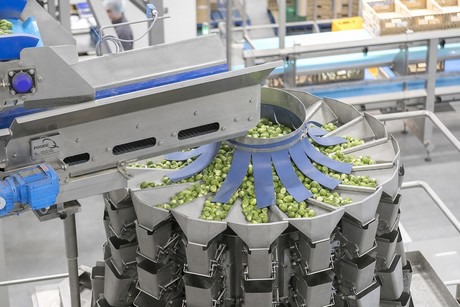 Brussels Sprouts on the scale
Brussels Sprouts on the scale
2019 season
The market is not very sensational this season. “The season is going well, prices are stable, and the hectare yields are financially sound for growers, “ says Bert van der Beek of Van Oers United in Dinteloord, the Netherlands. “We are expecting the smaller Brussels sprouts to be harvested soon. The large size volumes are declining a little, which is normal for this time of the year."
"There are also more B-sizes (between 30 and 40 mm), which are mainly destined for export to France and Germany. Most of the A-sizes (23 to 30 mm) will go to markets in the Benelux area. People in most European countries prefer eating the larger-sized Brussels sprouts.”
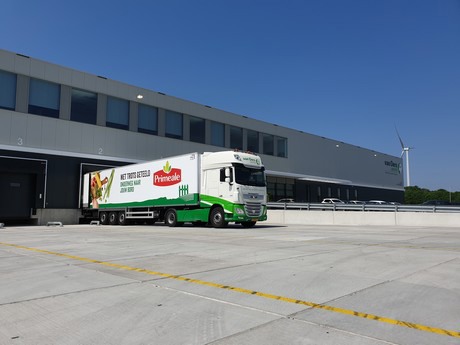
Trucks at Van Oers United’s loading docks
Besides these permanent export markets, Bert hopes to still make a certain contribution to the British market. “In the winter, the United Kingdom is self-sufficient when it comes to large Brussels sprouts. They, however, had significant issues with excessive rainfall. There is, therefore, a chance for additional sales of Brussels sprouts from the Netherlands on the British market. That is if gaps occur in supplying British supermarkets. I am, therefore, pleased that Brexit has been delayed a little.”
A few years ago, Brussels sprouts export value from the Benelux to North America went through the roof, even though, in absolute figures, it always only concerned a small volume. “Our Brussels sprouts are brought to the US via several exporters, where we still, clearly, occupy a market position,” says Bert. “The demand there keep rising, but we have noticed competition from Brussels sprouts grown in California. We can, however, compete well with this product since the transportation times from Europe and California to the American East Coast are virtually the same.”
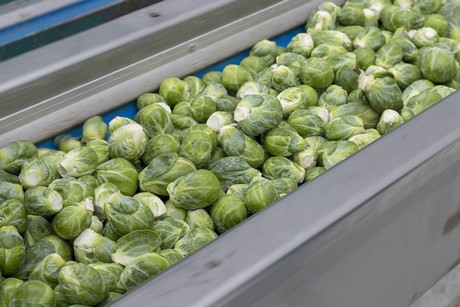
Brussels Sprouts are trendy again in Dutch and Belgian kitchens
Growing popularity
Bert has noticed that the US trend has made its way to Europe. “Not so much the term ‘superfood’ the American have given to Brussels sprouts, but I have noticed that Brussels sprouts' old-fashioned image is slowly disappearing from kitchens. In recent years, many varieties have been developed that do not taste as bitter, and these milder types are more popular. Brussels sprouts, therefore, fit in well with modern cuisine.”
It is not only the image these sprouts have in the United States that is playing a role in this rise in popularity. There are other contributing factors too. “Cooking shows and supermarket leaflets show new uses for this product, like stir-frying it. Supermarkets also offer more packs and ready-to-eat meals that include processes Brussels sprouts. This increases the volumes of Brussels sprouts used in the freshly processed segment, ” explains Van der Beek.
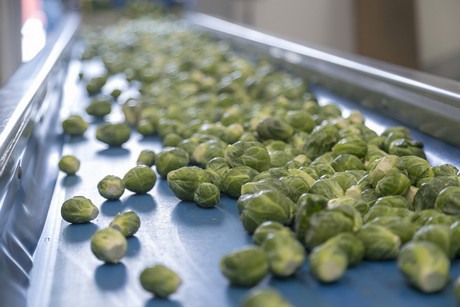
Niche markets: Organic and purple sprouts
There has been a turnaround in the niche cultivation of purple and Kalettes sprouts. This last variety is also known as flower sprouts. “We have not cultivated these this year. Sales were disappointing last year, and an increasing number of people are offering them. These varieties remain a clear niche in the Brussels Sprout landscape. In December, we saw more sales of these varieties, but they still remain too much of an unfamiliar product to shoppers. In the end, this was also a determining factor to stop growing them this year.”
Growing organic Brussels sprouts remains a difficult task. “It is not easy to cultivate organic Brussels sprouts. We are making a little progress on the fresh market, but it is not easy going. There are more organic Brussels sprouts in the frozen goods sector. That is a little easier because the frozen goods sector can process these better by blanching the sprouts, which allow them to keep their color better.”
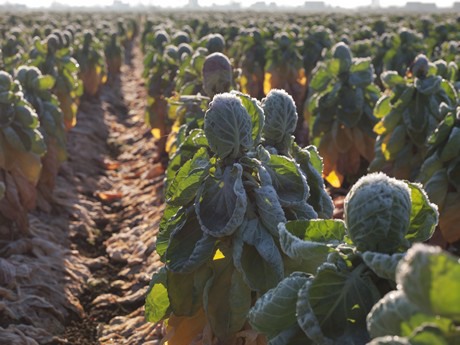 Brussels Sprouts in the fields
Brussels Sprouts in the fields
The farmer
In the past, Brussels sprouts were cultivated by growers who wanted to make a bit extra in the winter months. That has long not been the case anymore. “A true specialization occurred among Brussels sprout farmers,” says Bert. “Good harvesters are needed, fitted with a quality camera system, that leave bad sprouts back in the field, so none of them make it through the subsequent sorting process."
"Although Brussels sprouts acreage has increased slightly this year, and the yield per hectare is good, it does not mean there will be considerable expansion. The balance is good at the moment, but we must beware that we do not oversupply the market. That will not result in any added value,” Bert concludes.
Van Oers United
Bert van der Beek
Tel: +31(0)880 644 866
www.vanoersunited.com
bvanderbeek@vanoersunited.com
